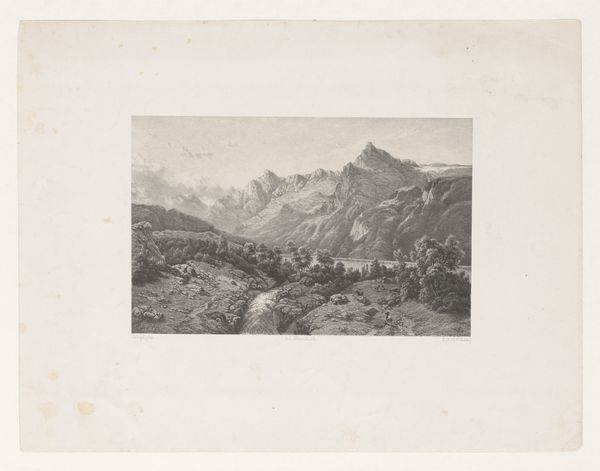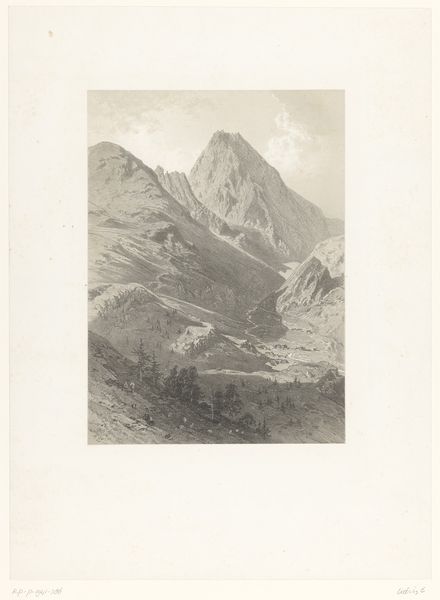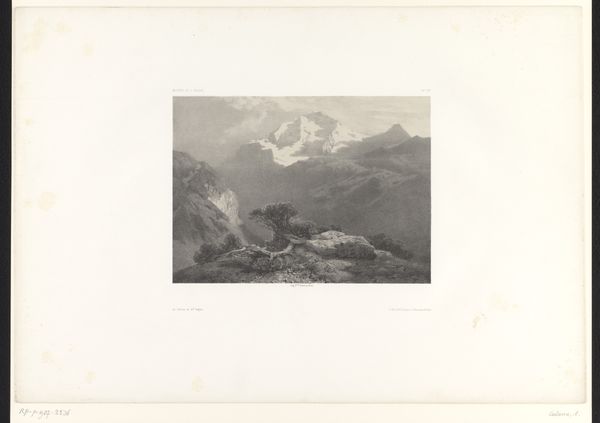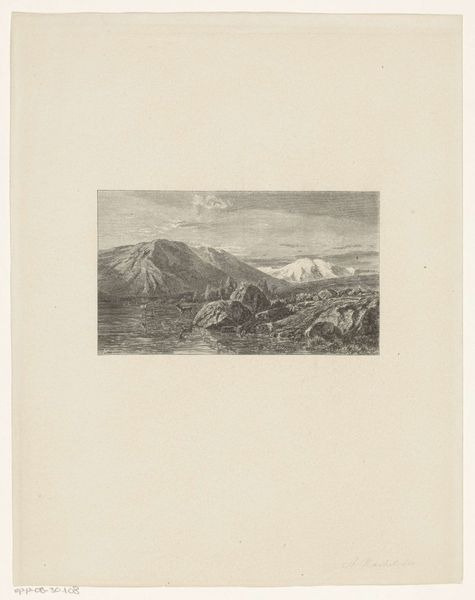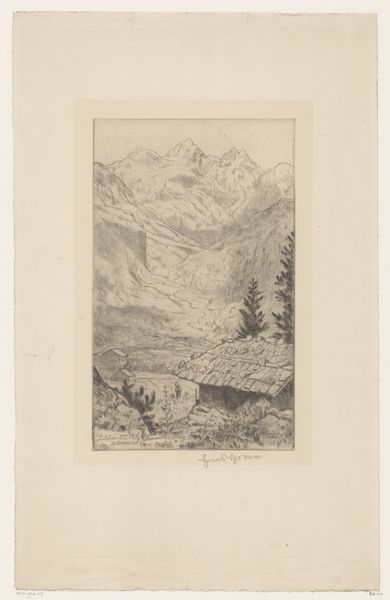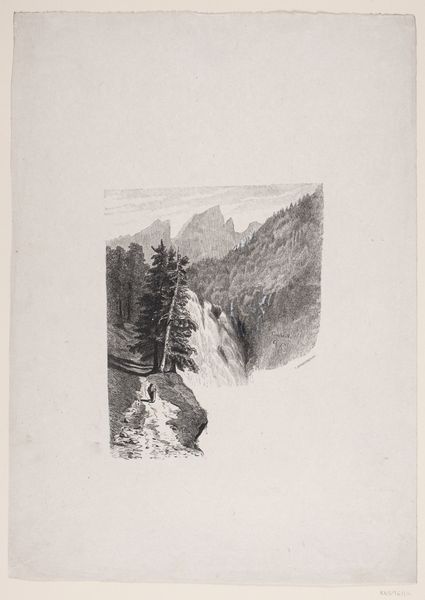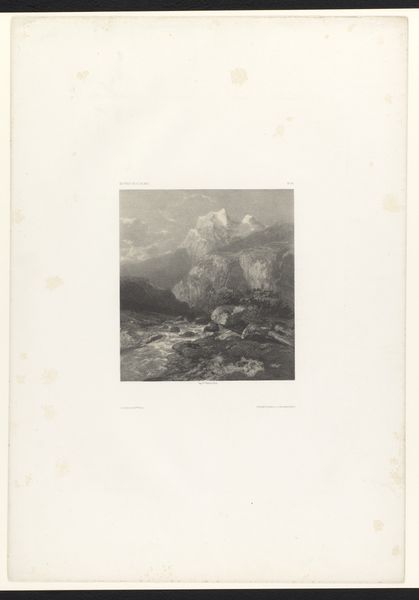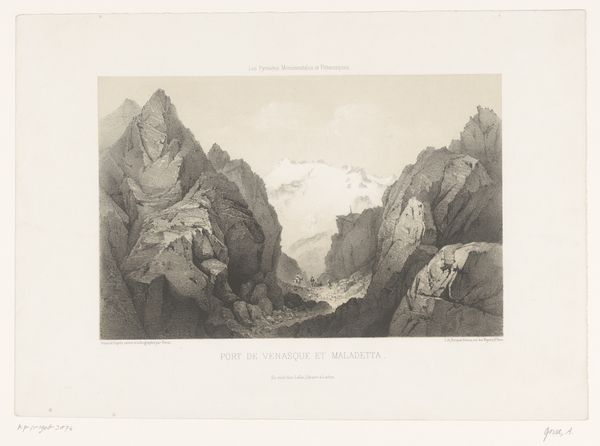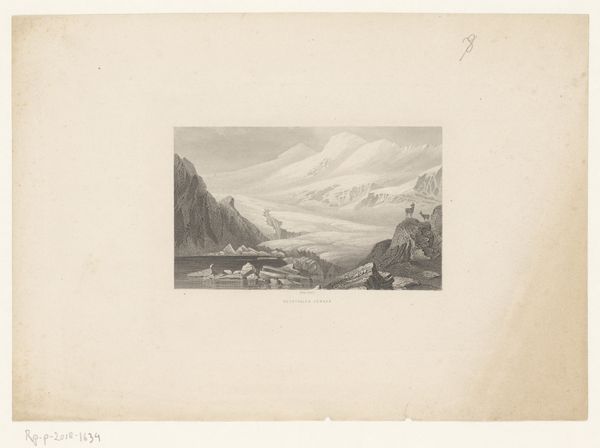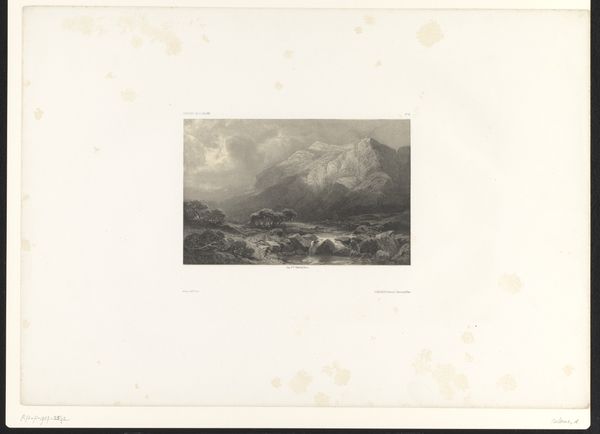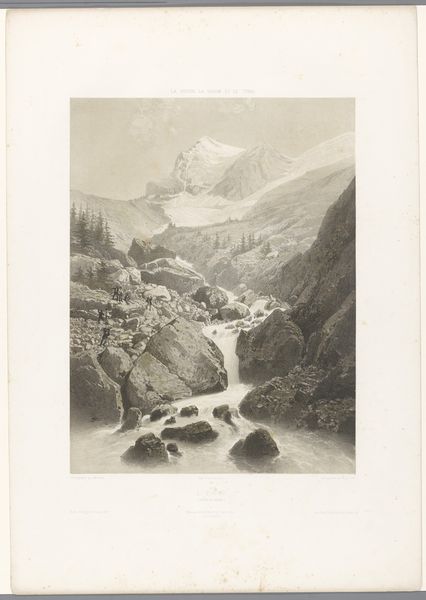
print, etching
etching
landscape
realism
Dimensions: 210 mm (height) x 155 mm (width) (plademaal)
Curator: John Lübschitz created this etching titled "Klippelandskab," or "Rocky Landscape," in 1885. What are your initial thoughts? Editor: It's remarkably serene, almost stark. The limited tonal range really emphasizes the rough texture of the rocks and the wispy clouds. It feels like a very quiet place, even lonely. Curator: Well, considering it's an etching, the creation involved a lot of meticulous labor. Think about the process: the artist would have painstakingly scratched lines into a metal plate, dipped it in acid to deepen those lines, then used that plate to make each print. Every impression involved craft and industrial execution. Editor: Right, the mechanical reproduction process adds a layer of socio-political relevance. Realism often served specific audiences by depicting natural environments shaped by landowners for hunting, vacations, and a display of status and dominance. Did the artist reproduce the work of art, like print, to reach different kinds of publics? Curator: It’s an interesting tension isn’t it? This realism seems focused on a particular patron interested in displaying idealized imagery or as social and natural propaganda for their dominion. Editor: Propaganda of power indeed. The mountain peak in the distance certainly asserts dominance over the landscape. There’s almost an oppressive silence here, reflective of the power structures present within this scene of ‘natural’ beauty. It serves as a sort of control and privilege of that area, right? Curator: Possibly. The details invite the eye, and reveal details that indicate land divisions; though these signs are quite difficult to appreciate without some level of background about the patron or local conditions at the time. How do the composition elements play to the history or consumption aspects of this print? Editor: By leading our gaze up to that central mountain, the artist constructs a hierarchy. It feels intentional, positioning nature and the assumed power controlling it above the viewer. The rivers flow only toward one point... What are your final thoughts? Curator: I find myself more attuned to the immense labor involved in translating that vista into a series of delicate lines. It's a transformation of raw materials through human skill. Editor: And for me, I keep thinking about the quiet assertion of power imbued within what seems like just a tranquil scene.
Comments
No comments
Be the first to comment and join the conversation on the ultimate creative platform.
